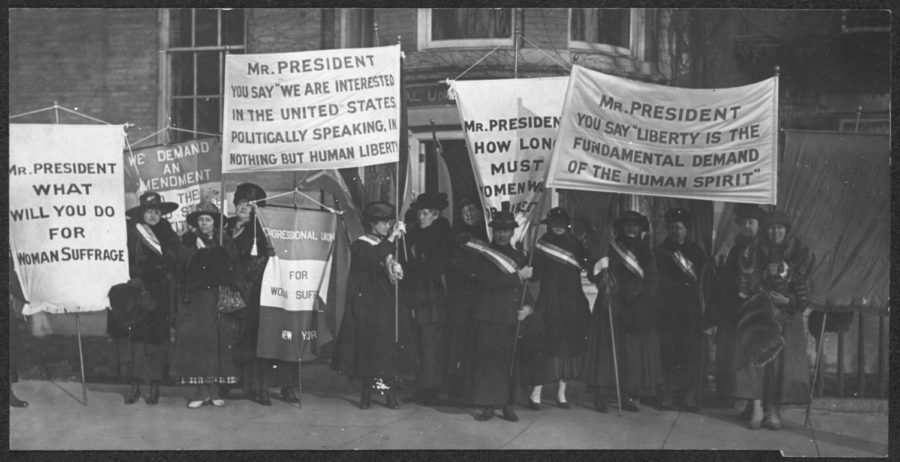The ever-present gender bias
Women in 1917, protesting for women’s right to vote. The struggle for gender equality still goes on today.
November 10, 2017
80%. That’s what women earn compared to men. The difference between what men and women earn is 20%. This is quite obviously a big problem, as these women are working just as hard as their male counterparts, but get less money for that work. This is extremely inequitable, and surprisingly, there is much more to it than that 80%.
“Male or female, or other, no matter their gender they are going to get paid the same amount. It blows my mind that it could be any other way. Even though I know it, it seems so viscerally outdated and unjust, that I don’t understand how my female counterparts work in fields that is a persistent and common and acceptable feature of their work lives,” says English teacher Ms. Coughlin.
But it is that way. Not only do women not earn as much as men, but many women are discriminated against not only because of their gender, but because of their race. According to the American Association of University Women, compared to white men, white women earn an average of 79% of their income doing the same job. If you are African American or Black, you are likely to make a mere 63% of a white male’s income. If you are Hispanic your prospects are even lower, as the average income is only 54% of a white male’s income. How has this gone unnoticed? Why aren’t people doing anything about it?
Another sad reality is that men are more likely to earn more even in overwhelmingly female- dominated professions. For example, female elementary and middle school teachers earn 91.3% of men’s salary, even though they make up 81.80% of all elementary and middle school teachers.
The problem is that it seems like it’s an easy problem to fix. Just pay women the same. But it’s much more complicated than that. Sexism is embedded into society and has been for centuries, and it is definitely gotten better, but it is still present. Patriarchy and misogyny are ever-present problems. These problems also are part of why women get paid less.
Junior Luke Gilmore shares his opinion. “Personally, I believe many people think that it is inequality that’s playing a role, the bosses are refusing to pay women more because they are a woman.”
The uncontrolled wage gap represents a fuller picture that shows that women are less likely to get jobs that get higher wages or higher responsibility. Since people in higher level jobs often earn higher salaries, women are likely to get payed less as a whole.
Sophomore Lilianna Krug says that “people should be more aware that it’s real. Because a lot of people think it’s real but then by thinking it’s real think that then that’s enough.” Raising awareness is good, but just knowing about it won’t help fix the issue.
This needs to be recognized more, and people need to take action and promote gender equality. We can do better than the status quo.


